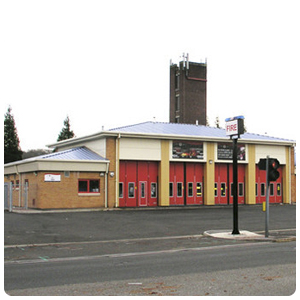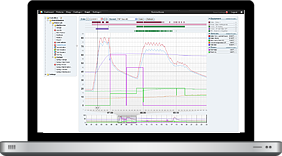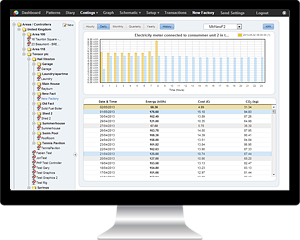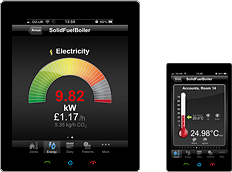Ely Fire Station makes gas savings with HeatingSave

Ely Fire Station handles fire safety in the medieval Cathedral City of Ely which situated 14 miles (23 km) north-northeast of Cambridge. The station is part of Cambridgeshire Fire and Rescue Service, whose community work includes developing a campaign to reduce the number of kitchen fires. Ely is also home to one of the six Cambridgeshire Fire and Rescue Service district offices, the office for East Cambridgeshire.
Ely is ‘day-crewed’, meaning fire fighters are in attendance five days per week, and also has a ‘retained’ element of crew outside of normal working hours. The premises are heated by a two-boiler conventional gas heating system.
In 2009 Clive Stevens, the Property Service Engineer at the county fire service was looking at ways of reducing the energy consumption used in heating the fire service buildings. He said to the HeatingSave reporter, “We were finding that it was difficult to regulate the heating to match the occupancy and use of the building. Another problem was that people just opened the windows when they were hot instead of turning down the heating. What we needed was an automatic system that matched the heating to the building use”.
After seeing a demonstration of the HeatingSave system Cambridgeshire Fire and Rescue Service decided to install a HeatingSave Building Energy Management System to the twin boiler system that heats the Ely Fire Station. There were no problems with the installation which took place earlier this year. The installation itself was straight forward as HeatingSave is designed to be a retrofit with no need to interfere with the existing plumbing.
The HeatingSave controller monitors the temperatures of the boilers’ flow and return, plus the outside temperature and temperature of each heating zone. This enables HeatingSave to gain a complete picture of the fire station’s heat-loss profile. The controller has an internal mathematical thermal algorithm of station in order to ‘learn’ how to make gas fuel savings.
Clive confirmed that Ely use passive infra-red sensors connected to the HeatingSave controller to solve the variable occupancy issue. It means that when no fire fighting staff are on base, the occupancy detectors sense this and HeatingSave turns down the temperature to a lower background heat – and when members of the Brigade are sensed returning to a room, it turns it back up again. This all happens automatically without the Station Manager having to do anything.
The fire service opted for a stand-alone HeatingSave system, which we estimate will save 20%-30% off their heating bills. At some point in time they might also hook up the system to the Internet so that they can use the HeatingSave PC software from a central location to view graphs of the heating status and consumption of each station. This software also calculates the costs, kilowatt hours used and the amount of CO2 produced by the heating system for each day of the year.
Clive closed by saying he was satisfied with the HeatingSave service, adding, “I would use the company again”






